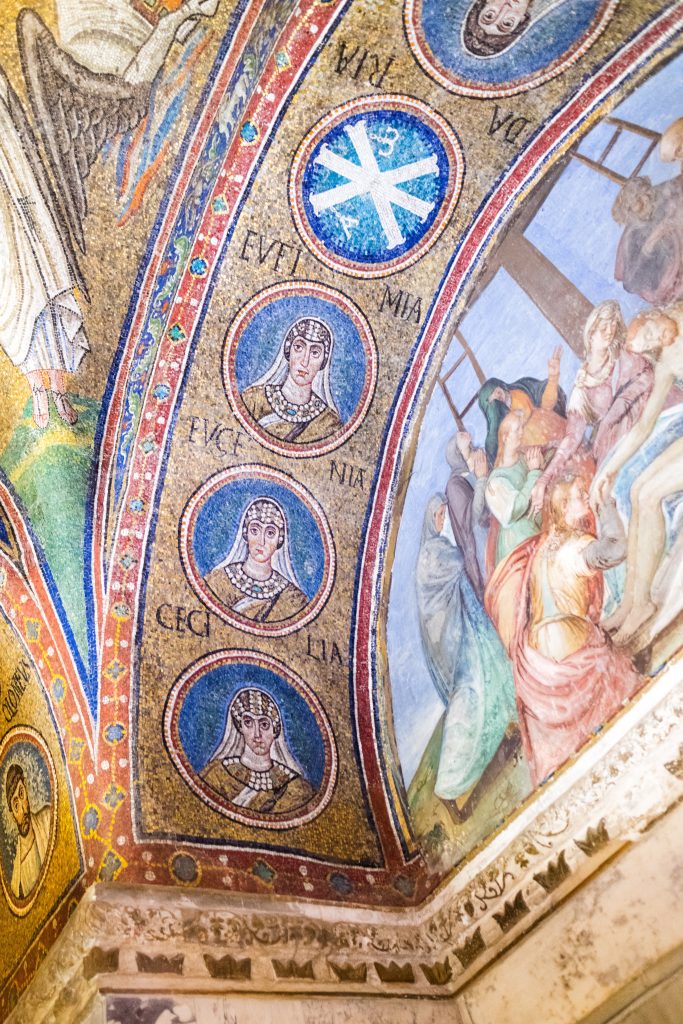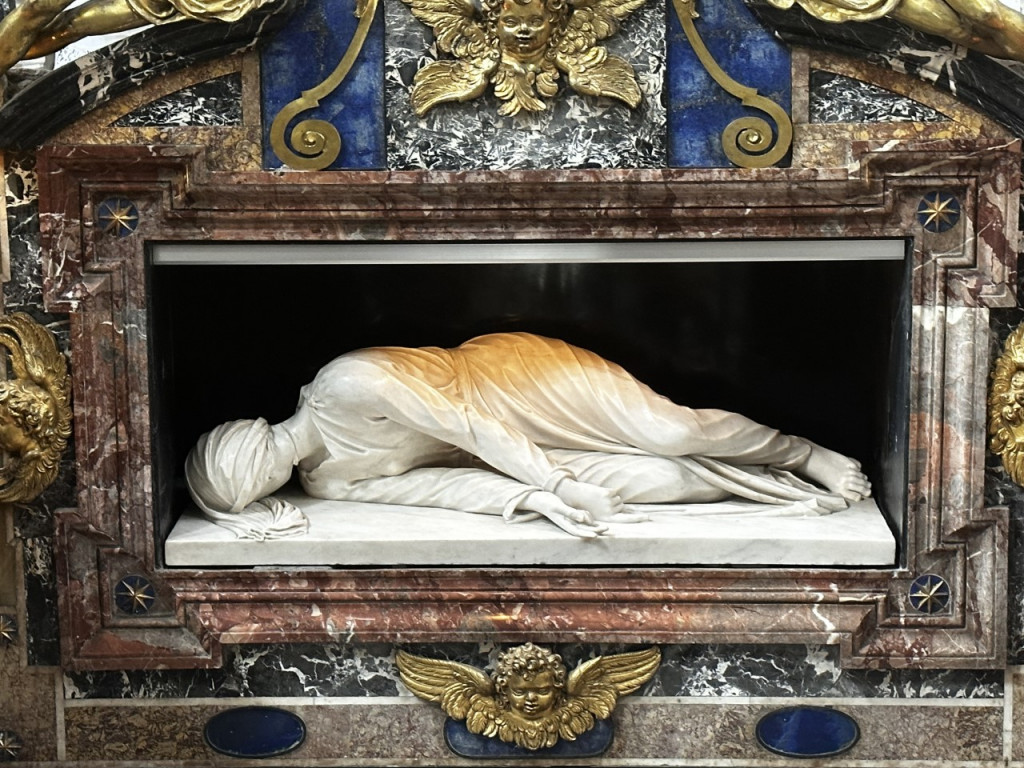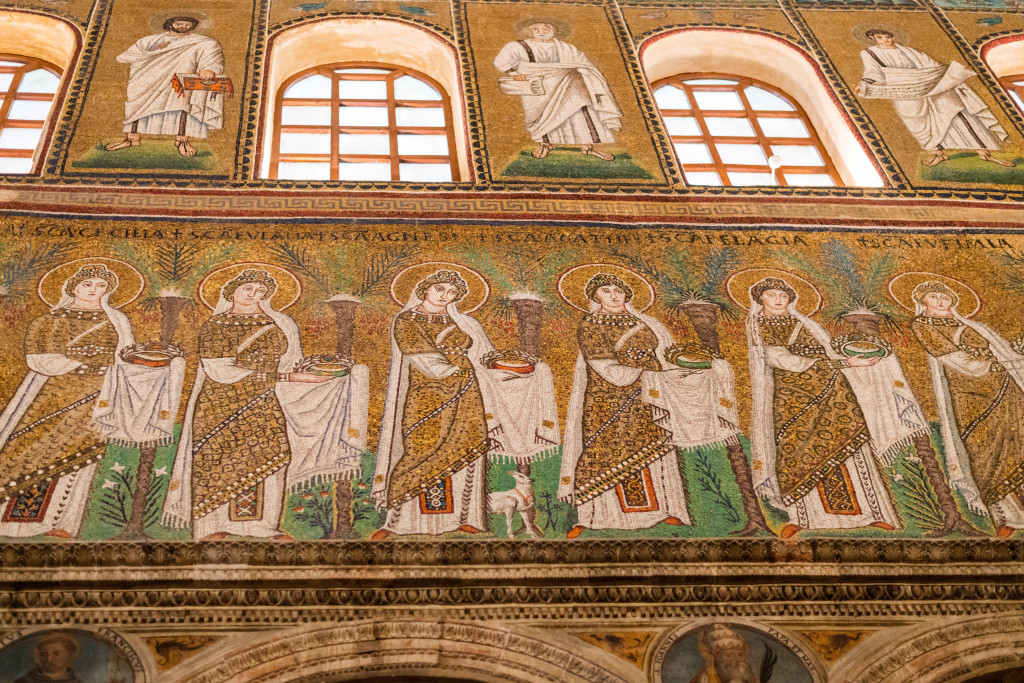Cecilia of Rome
Virgin Martyr of the 3rd Century
Cecilia was a virgin martyr of the third century whose written story circulated widely starting in the fifth century. By the sixth century—and throughout the Middle Ages—Cecilia had become one of the most famous martyrs and most venerated saints of the Church. In the fifth century, The Acts of St. Cecilia, the story of her life and death, was published. Unsurprisingly, by end of the fifth century, Cecilia became part of the official Church records: she was incorporated into the Martyrologium Hieronymianum, an authorized collection of martyr accounts, which listed her feast days in the Church’s liturgical calendar. In the earliest pilgrimage itineraries from the seventh century, the written guides provided directions and commentary about the burial place of Cecilia in the catacomb of St. Callixtus on Via Appia in Rome. By the eighth century, St. Cecilia was an established hero of the faith, as evidenced by ecclesiastical canon and calendar, literary accounts, and informal guides.



Hagiography – The Acts of Cecilia was one of scores of martyr narratives. These epic tales comprise a genre of romantic stories of chaste and faithful Christians who faced persecution and endured a sacrificial death that mirrored the death of Jesus Christ. Born into a noble family, Cecilia converted to Christianity and in obedience to Christ, chose to resist familial and social expectations. She refused her marriage to Valerian by telling him she was already married to Christ and committed to chastity. She suggested that he visit an old man named Urban (later revealed as Pope Urban) who would enlighten him. Her betrothed returned as a baptized Christian who then evangelized his brother Tiburtius. Cecilia and Valerian married but agreed to remain chaste. A local prefect ordered the two brothers to be executed for their faith. Cecilia was eventually targeted by the Roman officials and sentenced to death. Their first attempt to kill her in her steam bath was unsuccessful so an executioner was sent to her home to behead her, but when he struck her with his sword three times, she did not die. She lived for two days, sharing the gospel with many visitors, and finally succumbed on the third day. Pope Urban I buried her in the catacomb with the other popes, usually presumed to be the catacomb of St. Callixtus on Via Appia in Rome.
Experts point to historical inconsistencies—details of her burial, the emperor, the pope, the timeline of the story—and have concluded that her story is largely fiction. While there may be scant historical evidence of her, she has not disappeared from memory. No one can deny the lasting influence she had on the early and medieval Church. Consider the droves of Christian pilgrims in the sixth through ninth centuries that visited her crypt, and her incorporation into official martyr lists, the Church canon and calendar, and the immeasurable devotion of Christians even to this day.
Resources:
- Denzey, Nicola. The Bone Gatherers: The Lost Worlds of Early Christian Women. Beacon Press, 2008.
- Lapidge, Michael. The Roman Martyrs: Introduction, Translations, and Commentary. 1st edition. Oxford, United Kingdom: Oxford University Press, 2018.
